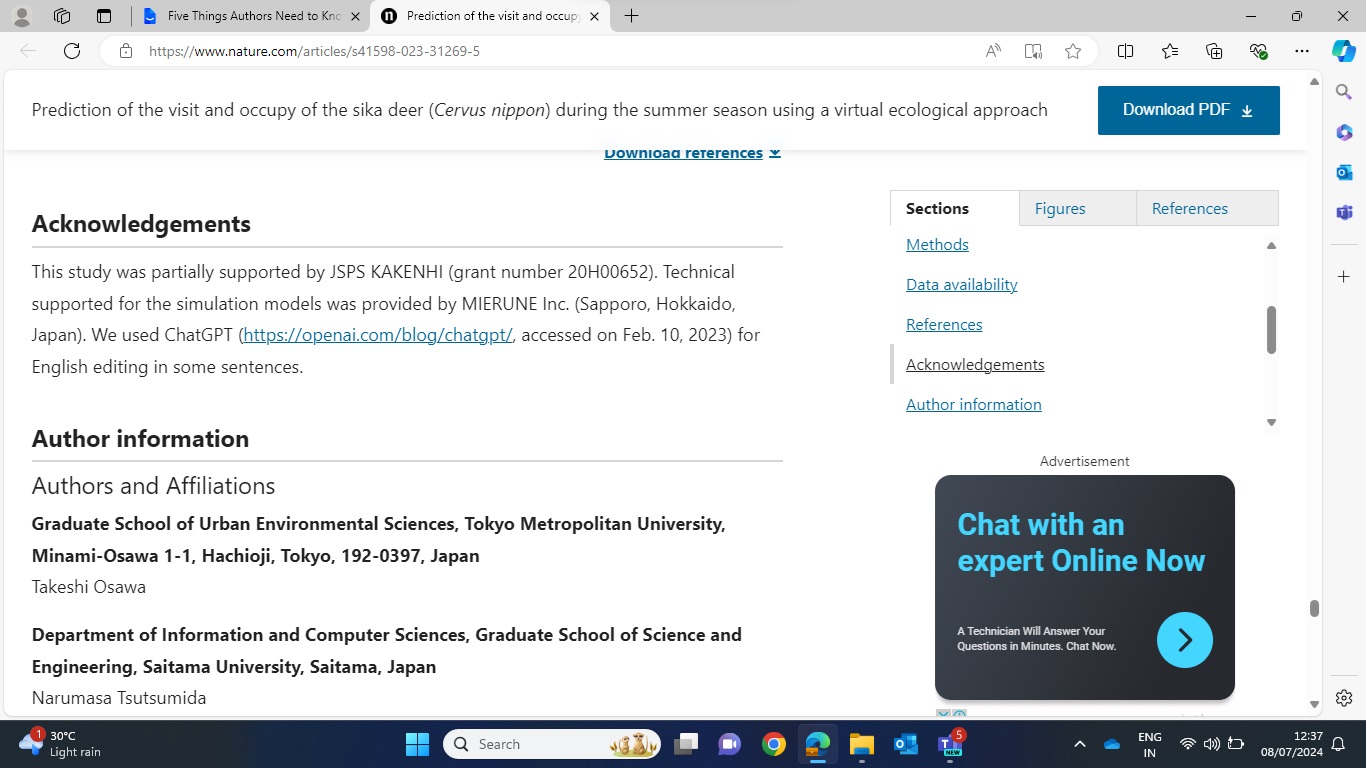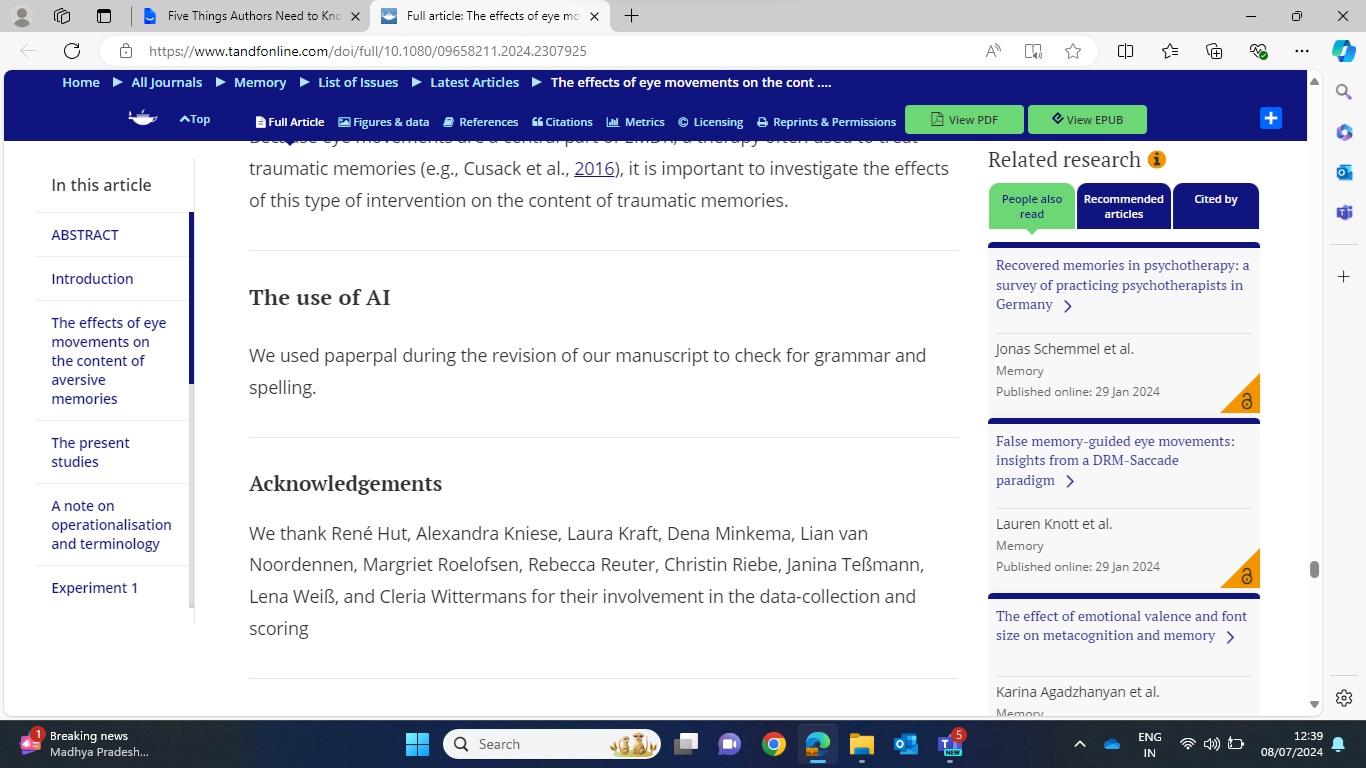Academic writing tools, such as Paperpal, have become indispensable for researchers seeking to improve the efficiency and quality of their writing. Paperpal offers researchers a wealth of opportunities to expedite the manuscript preparation process, helping them identify relevant supporting literature, craft articulate narratives, and meet the target journal’s requirements. However, to maximize the potential of Paperpal, you’ll need a clear understanding of its capabilities and limitations. In this article, we present 5 key considerations you need to keep in mind when you’re using Paperpal or any generative AI tool to write your research paper.
Make Sure You’re Allowed to Use Paperpal
First of all, confirm whether your target journal allows you to use any AI tools and how. For example, the JAMA journals permit the use of generative AI tools (including Paperpal) to create, review, revise, or edit manuscript text, but require proper disclosure in the Acknowledgments section. Science and its sister journals require authors to disclose the use of AI technologies in both the Acknowledgements section and the cover letter. Using an AI tool is unlikely to be a reason for a journal to reject your paper, as long as the tool has been used ethically and you’ve been transparent about it. See, for example, Osawa et al. (2023)’s article in Scientific Reports.

Also note how Meckling et al. (2024) disclosed their use of Paperpal in their Acknowledgments section.
 Pro Tip: If your target journal does not provide any guidelines on the use of AI, refer to the standards set by the International Committee of Medical Journal Editors (ICMJE).
Pro Tip: If your target journal does not provide any guidelines on the use of AI, refer to the standards set by the International Committee of Medical Journal Editors (ICMJE).
Use Paperpal as an Assistant, not a Boss
Treat Paperpal as a smart, helpful AI assistant with writing expertise. Paperpal can help you achieve the right academic tone, meet your target journal’s word limits, and sound like a native English speaker. Paperpal’s secure generative AI technology can even create for you outlines, titles, abstracts, keywords, summaries, study highlights, and email templates for journal communication. But when it comes to identifying gaps in existing knowledge, finding innovative solutions to these gaps, or generating exciting new hypotheses, no AI tool can be a substitute for your own domain knowledge and critical thinking skills.
Pro Tip: Because any AI-generated text comes from a training database, you also need to run a thorough plagiarism check, and screen any AI output for text that may be similar to previously published works. You can make use of Paperpal’s own plagiarism detection feature, which compares your work against 99 billion webpages and gives you a detailed plagiarism report in minutes.
Let Paperpal Get You Started
Paperpal can be invaluable when you’re facing the task of summarizing 2 years or more of research into 2,500 words. The outline generation feature can help you figure out how to assemble and organize information, provide sophisticated transitions between different ideas, and even refine and polish your study rationale or hypothesis statement.
Pro Tip: If you’re struggling to get the right words to express your ideas in English, write them down in your native language and use Paperpal to translate them into polished, academic English.
Use Paperpal to Sift Through Existing Research Quickly
With millions of scientific papers published each year, researchers struggle to keep up with the literature. Paperpal can help you get concise, science-backed answers to key questions in simple English, supported by relevant research articles, to save you time. You can use Paperpal’s new Research feature to find citations to support any arguments you’re making in your paper and expedite adding them to your citation library. Again, no AI tool can be a substitute for your own critical thinking during a literature search. Never add citations suggested by any AI tool to your research paper without verifying them first and confirming that they’re indeed relevant.
Pro Tip: If you’re using any AI tool to search the literature for a systematic/narrative review or meta-analysis, you’ll need to keep detailed records of your search strategy and the prompts you used. Your target journal or peer reviewers may ask for these details, since they’re important components of your study methodology.
Remain in Control
You can’t use Paperpal (or any AI tool) blindly as a shortcut to get a readymade journal article. It’s important to do the research, come up with new ideas, and compile the evidence before you can use Paperpal to create a solid, worthwhile research paper. Nearly all journals will ask you and your co-authors to take responsibility for the content of the paper (according to the ICMJE guidelines), and hence, you’ll need to thoroughly review any AI output you use in your manuscript and refine it as needed.
Pro Tip: Many journals, as well as the ICMJE guidelines, forbid listing any AI tool as an author or citing an AI tool as a source. Do not list any AI tool in the article byline or reference list.
Bottom Line
Using AI tools like Paperpal can make you a faster and more efficient writer and researcher. But these tools come with a caveat: they need to be used responsibly and you cannot blindly rely on their output. Academia and scholarly publishing are increasingly accepting and utilizing AI, to supplement human expertise and creativity, not as a substitute for them.
Paperpal is a comprehensive AI writing toolkit that helps students and researchers achieve 2x the writing in half the time. It leverages 21+ years of STM experience and insights from millions of research articles to provide in-depth academic writing, language editing, and submission readiness support to help you write better, faster.
Get accurate academic translations, rewriting support, grammar checks, vocabulary suggestions, and generative AI assistance that delivers human precision at machine speed. Try for free or upgrade to Paperpal Prime starting at US$19 a month to access premium features, including consistency, plagiarism, and 30+ submission readiness checks to help you succeed.
Experience the future of academic writing – Sign up to Paperpal and start writing for free!



